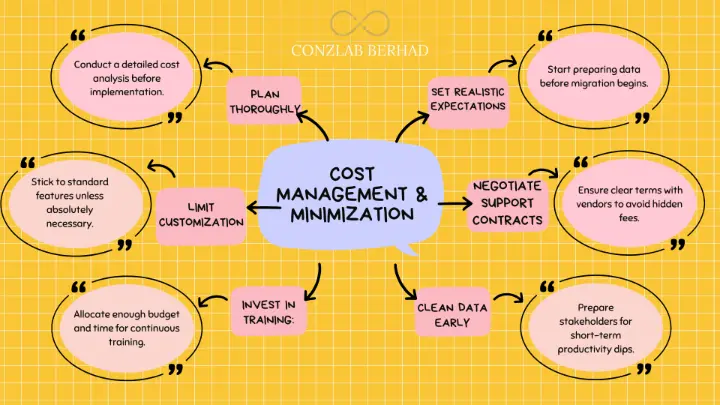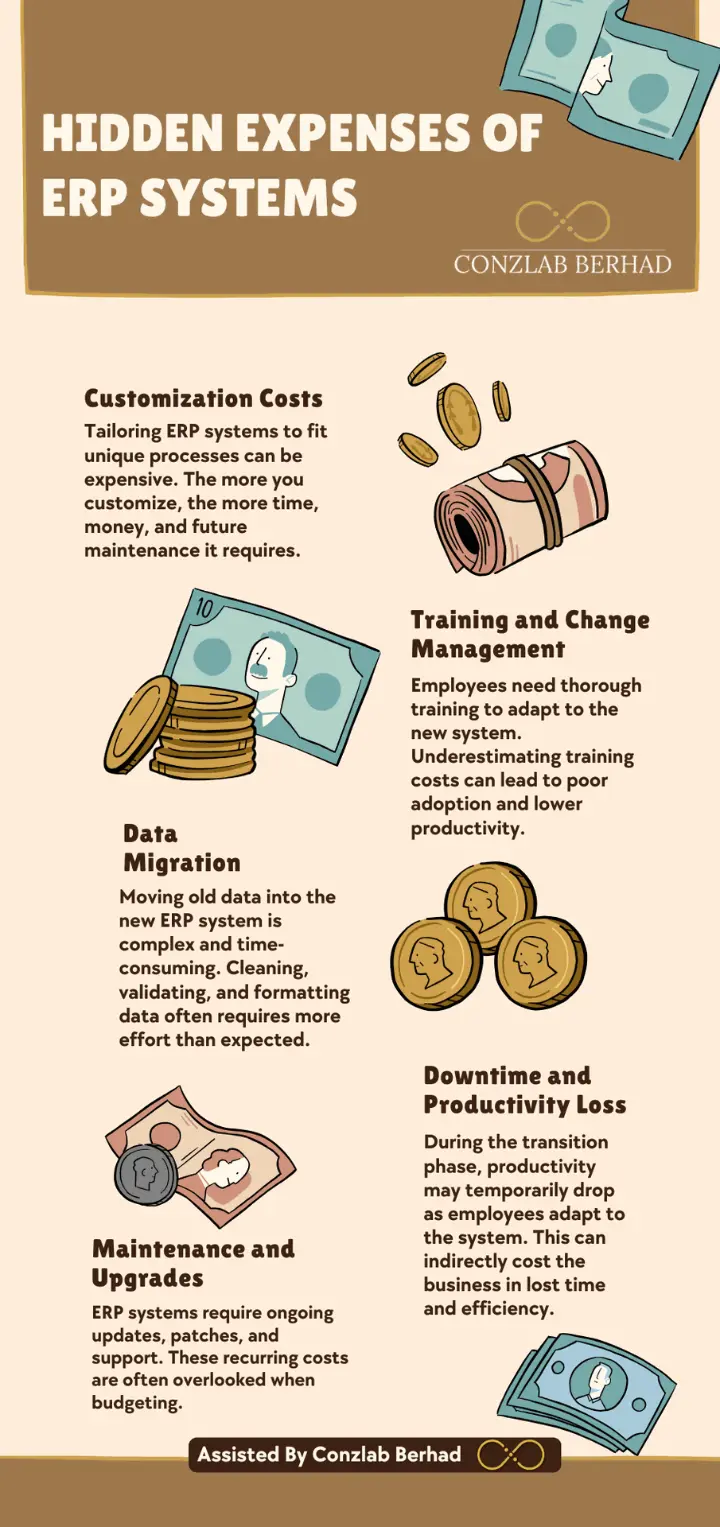Introduction to Hidden Costs in ERP

When planning an ERP system, businesses often focus on obvious costs like licenses and implementation. However, hidden expenses such as training, data migration, customization, and ongoing support can quickly push budgets beyond expectations.
Anticipating these costs early helps companies allocate resources wisely and avoid financial strain. With proper planning and management, ERP can deliver real efficiency and long-term value instead of becoming a costly burden.
While ERP systems are powerful tools for streamlining operations, overlooking the hidden costs can turn a strategic investment into a financial burden. By recognizing expenses such as customization, training, data migration, and ongoing support, businesses can plan more realistically and avoid unpleasant surprises. A well-prepared approach not only keeps budgets under control but also ensures that the ERP system delivers the efficiency, productivity, and long-term value it was designed for.
How to Manage and Minimize These Costs

Managing ERP costs effectively comes down to preparation, discipline, and transparency. By carefully planning, prioritizing essential features, investing in training, and addressing data issues early, businesses can avoid unnecessary spending and disruptions. Strong vendor agreements and realistic expectations also go a long way in ensuring the system supports growth instead of straining resources. With the right strategy, ERP becomes less of a financial risk and more of a long-term investment in efficiency and productivity.
Managing ERP costs is less about cutting corners and more about making smarter decisions.
Hidden costs often include staff training, data migration, customization, system upgrades, and post-implementation support. These costs are not always visible in the initial budget.
Training requires time, resources, and sometimes external consultants. Without proper training, employees may misuse the system, leading to inefficiencies and additional expenses.
By cleaning and organizing data before migration, prioritizing essential information, and using automation tools, businesses can reduce both time and money spent on data transfer.

The Hidden Costs of ERP and How to Manage Them